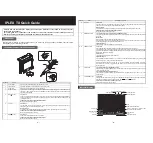
8-4
IM WT5000-02EN
Setting the Save Destination
4.
Tap
File List
. A file list appears.
File operation (see section 8.6)
Select the save destination (User, USB, Network).
File path
The path to the currently selected save destination is displayed.
Save destination free space
Setting Auto Naming (Auto Naming)
OFF: The auto naming feature is disabled. The name that you specified for the File Name setting
is used. If there is a file with the same name in the save destination folder, you cannot save
the data.
Numbering: The instrument automatically adds a four-digit number from 0000 to 0999 after the
common name that you specified for the File Name setting and saves the file.
Date: The file name is the date and time (down to seconds) when the file is saved. The file name
that you specified for the File Name setting is ignored.
Y M D H Min S
20170930_121530_0 (2017/09/30 12:15:30)
The sequence number (0-9, A-Z) that is appended
if a file name with the exact same date and time
(down to seconds) exists.
The sequence number that comes after the date and time is appended if a file name with
the exact same date and time (down to seconds) exists.
The sequence number is incremented by one (0 to 9 and then A to Z) each time a file is
added.
Assigning File Names (File Name)
You can set the file name that is used when Auto Naming is set to OFF. This is also used as the
common file name when Auto Naming is set to Numbering. The maximum number of characters that
you can use for file names and folder names is 32 characters. However, there are limitations on the
type of characters and the character strings that you can use.
For instructions on how to enter text, see section 3.3 in the
Getting Started Guide
, IM WT5000-03EN.
8.2 Setting the Save Destination for Numeric Data, Waveform Data, and Screen Images
















































